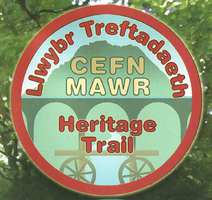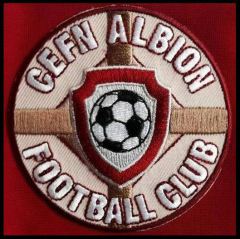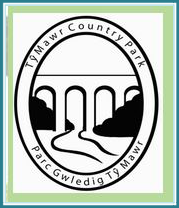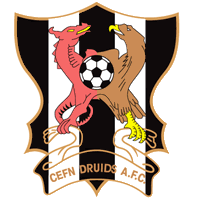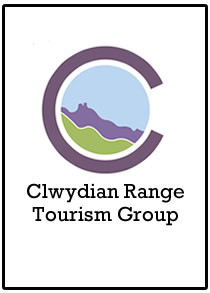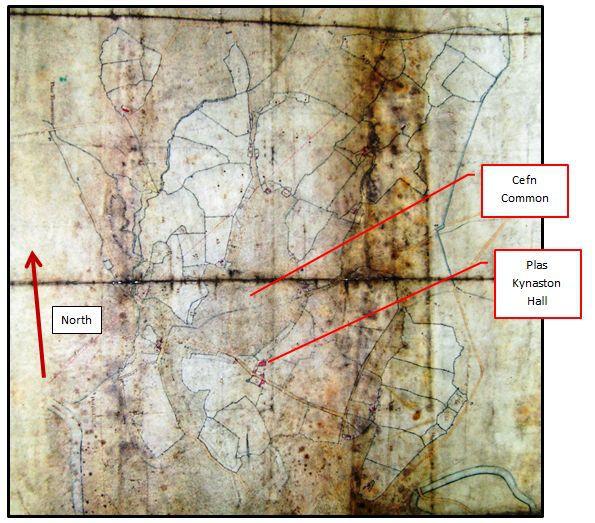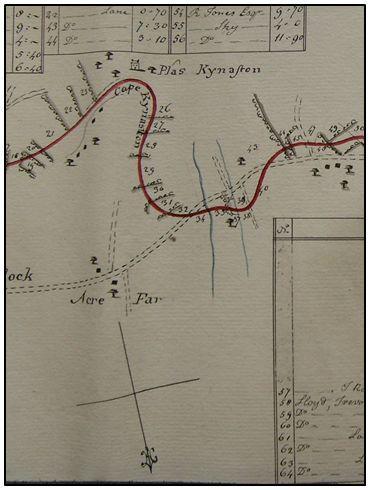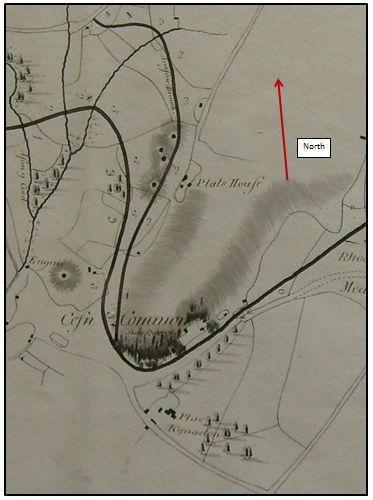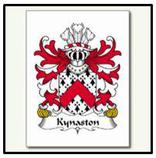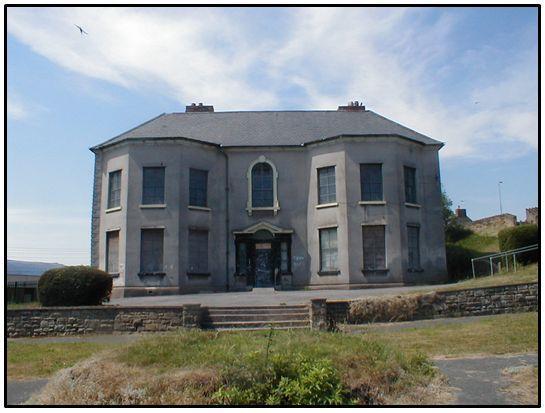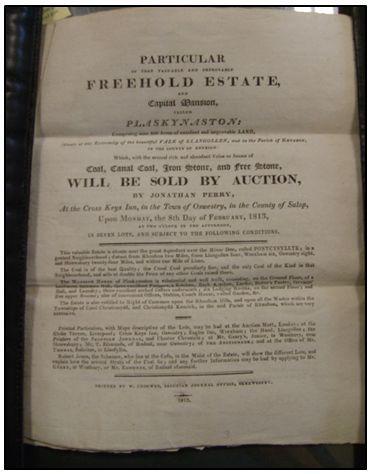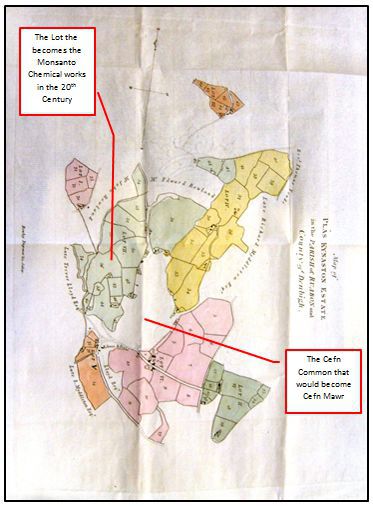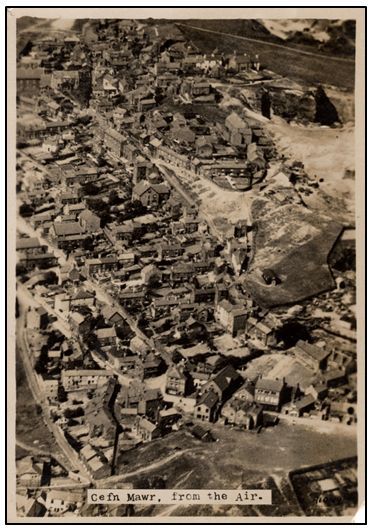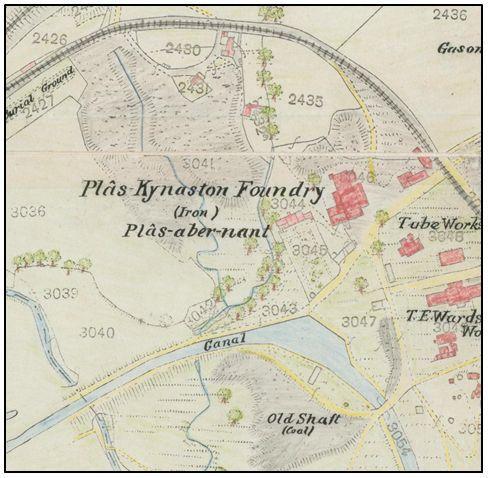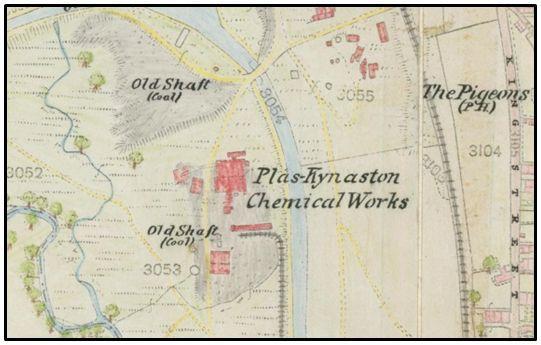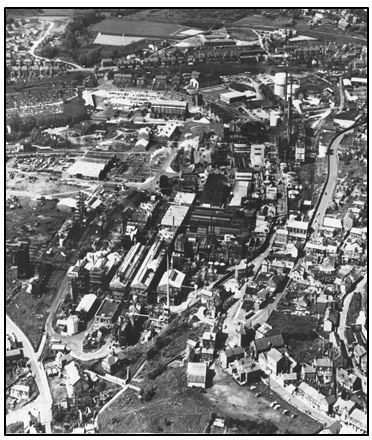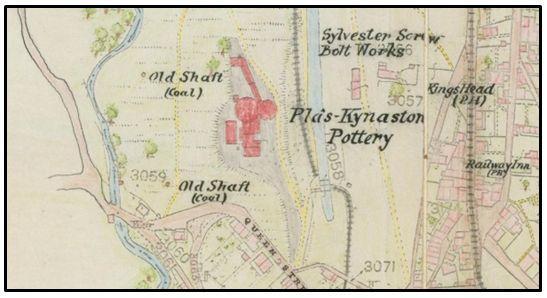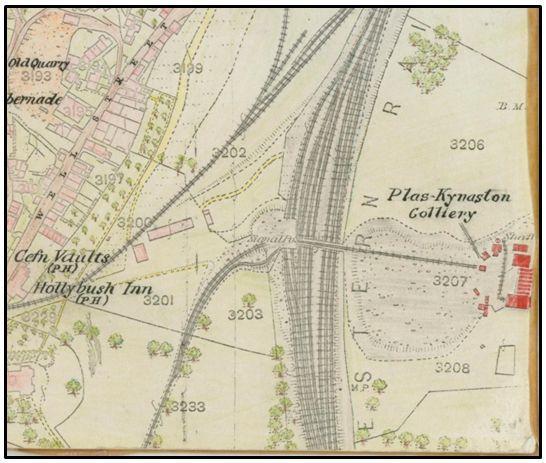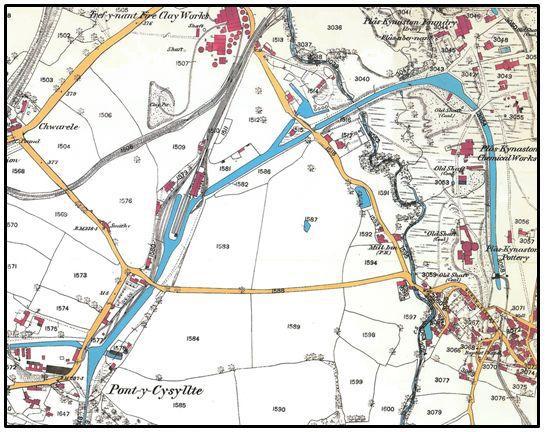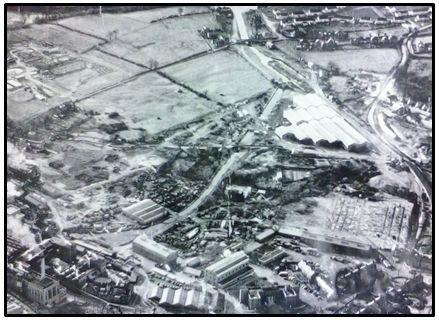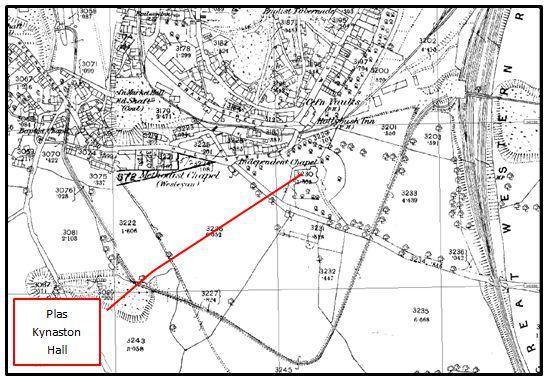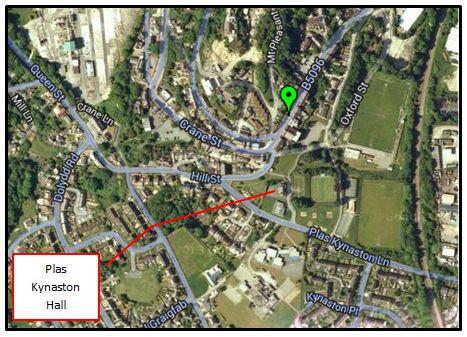Plas Kynaston, Cefn & Cefn Mawr
Welcome to our Plas Kynaston page. This page has been set up to allow easy access to information on places and industries that have existed in our community here in Cefn Mawr and the Cefn at the centre of the Pontcysyllte World Heritage Site that are associated with the Plas Kynaston Estate. Plas Kynaston, actually means in English, Mansion Kynaston as Plas is the Welsh word for large house or mansion and it is from the family name of Kynaston and the Welsh word Plas that the following take name.
Plas Kynaston Estate
The Plas Kynaston Estate once occupied a large proportion of the fertile land around the Cefn in North East Wales. It surrounded what was once known as the Cefn Common where the commoners lived on the poorer land of the “big ridge” which is where Cefn Mawr takes its name from, Cefn meaning Ridge and Mawr meaning big. However the estate took its name from the Kynaston family who once lived there. Note the lighter shaded and clearer areas on the map are the lands of the Plas Kynaston Estate and surround the Cefn Common on this undated map from the 1700’s.
The Cape of Kynaston, lying uphill from the Plas Kynaston Hall. This extract is part of the proposed route (in red) of a canal branch running along the northern side of the Vale of Llangollen. It is taken from the, “Plan of the Eastern Canal and Branches Deposited 11th November 1792”. For more information on the canal please see our page on Canals Please note North is to the bottom of this map extract.
This extract is taken from the “Deviation of the Ellesmere Canal from Pontcysyllte to Chester with the Acrefair Coal and Holt Branches, Deposited 25th September 1795.” It shows the Cefn Common on the ridge of what was called the Cape of Kynaston and the start of the stone quarries that the Pontcysyllte Aqueduct would be carved from.
The name Kynaston
The family are known to have held a seat as Lords of the Manor of Kinnerly, possibly predating the Norman Conquest of England by Duke William of Normandy in 1066.
Conjecturally they are descended from the Princes of Powys in Wales, through Griffith, son of Joerweth Goch. Lord of Mochnan, younger son of Meredith. The Prince of Powys who took refuge in Shropshire and King Henry III of England gave him lands in that county. He married Matilda, the heiress of Ralph le Strange by whom he acquired the manor Kinnerly. Griffith Vychan settled at Tre-gynvarth, which, when anglicized, is Kynwarth’s Town, which when spoken, became slurred into Kynastown or Kynaston.
This then accounts for the family name appearing in both Shropshire and what was then Denbighshire. They lived in the Plas Kynaston Hall, so named after their family, the Mansion of the Kynastons at the what would become the Cefn and Cefn Mawr in later years. Please note there are also variations in the spelling of Plas Kynaston and as another Plaskynaston. Now hopefully this fine building, once also the local council officess will be restored by the Gorgiean Soceity in the not to distant future. (2014)
The lands of the Plaskynaston Estate or rather the ground beneath was rich in minerals, such as iron stone, coal, dark shale or canal coal, free stone and clay. This was an important factor in the route the Elsmere Canal had followed and another contributory factor in the construction of the Pontcysyllte Aqueduct. In 1813 estate was sold off following the demise of then presiding family, the Moystons and was broken up into smaller lots to aid the sale of such.
The lots to be sold off, of the Plaskynaston Estate for sale in 1813, then in the Parish of Ruabon in the county of Denbigh, note the plain area in the centre of the map, the Cefn Common. This becomes Cefn Mawr following the rapid expansion in the industrial revolution because of the minerals to be found in the area and the industries that sprang up around such.
The Plas Kynaston Foundry
This was the foundry where the castings for the Pontcysyllte Aqueduct were poured by William Hazeldine in accordance with Thomas Telford & William Jessop, as were many other important structures still in use today.
At the time of the construction of the Plas Kynaston Foundry it was one of the most technically advanced foundries in the world. The advent of the early steam engine allowed it to be located at a level that would be suitable to ship the iron work produced by the Plas Kynaston Foundry along what was then the equivalent to our motorways, the canal. This would then be carried across the Pontcysyllte Aqueduct to the rest of the country. Please see our page on the Plas Kynaston Foundry.
Plaskynaston Blast Furnace
Note before the blast furnace was renamed after TE Ward it was known as the Plaskynaston Furnace as can be seen from the Plan of the Wynstay, Plas Kynaston and Cefn Collieries dated 1865.
The Plas Kynaston Chemical Works
The Plas Kynaston Chemical Works, this was the first chemical works set up by RF Graesser in 1867 which went on to become the mighty Monsanto Chemical Works in the 20th century.
The mighty Monsanto Chemical Works in the 1960’s with Cefn Mawr perched on the hill to the right of the works. Monsanto at that time was the main major employer in the area and offed a good livelihood for its workers and employees. However because of the emissions from the plant, this lead to a divided community between those that worked there or for companies dependant on the plant for work and those that didn’t. Although Monsanto made many positive contributions to the community there were also negative aspects such as the pollution which the community of Cefn still have to deal with even today.
The Plas Kynaston Pottery
The Plas Kynaston Colliery
The Plas Kynaston Canal
Please also see our webpage Plas Kynaston Canal Story
The Plas Kynaston Railway
The Plas Kynaston Railway connected the canal in the top left corner to the colliery on the right hand side of this map extract of the 1873 Ordnance Survey Edition.
Plas Kynaston Hall, Lane & Place in 2011
Please feel free to down load this document on Plas Kynaston, Cefn & Cefn Mawr provided free of charge by the PKC Group to try and promote our community
Plas Kynaston.pdf
Adobe Acrobat document [3.1 MB]


